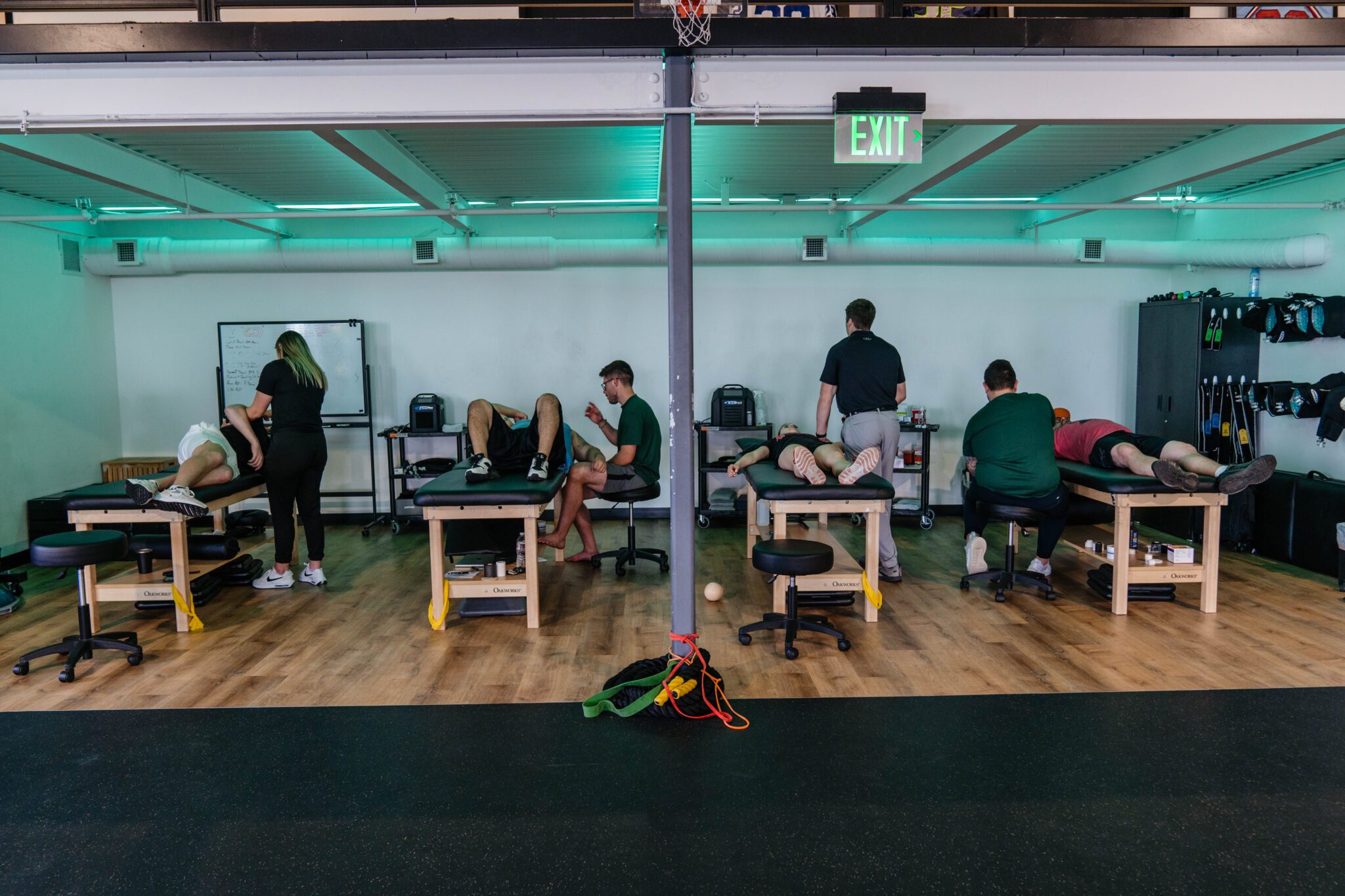In a typical NFL game, ball carriers average about 60 to 70 rushing yards. In MLB games, pitchers usually throw around 100 pitches. Professional women’s soccer players run approximately 6 miles during matches. In many sports, contact and collisions occur, causing injuries. All kinds of sports can lead to overuse injuries like rotator cuff issues, back strains, and even some sport-specific problems such as tennis elbow, golfer’s elbow, or runner’s knee.
Whether the cause is overuse, direct impact, or another factor, sports injuries can cause pain and problems for athletes. Working through pain is not a great option for athletes; physical therapy is. Read on to learn about what’s different about sports injury physical therapy.
First thing’s first. If you have an injury, be sure to get a diagnosis from a medical professional. They will ask about the injury and its origin, inquire about your level of activities, and examine the injury. Sometimes, an x-ray or MRI might be recommended. If there’s severe pain, swelling, bruising, inability to bear weight, or an obvious deformity, a diagnosis can make it easier to find a way forward with a sports injury physical therapy (PT) treatment plan.
At ROI, physical therapy experts are skilled in evaluating the movement system of an athlete; they can help to diagnose movement dysfunction and prescribe evidence-informed treatment to help with healing.
Get clear on your goals. Of course, one goal for sports injury physical therapy is to reduce pain. However, athletes will also want to have a thorough recovery of the injured area, a plan to prevent future injuries, and goals for getting back to peak performance level. For athletes, it’s important to discuss this personal pathway of returning to sports with a professional who can help you step-by-step as you heal.
Manual therapies are key. Most PT plans will include a therapist working through a set of exercises in person, and a recommendation for exercises to do at home. At ROI, manual therapies play a key part in allowing athletes to achieve the best results from PT. Manual therapy at ROI is done by physical therapists and sports massage therapists. It helps athletes to maintain and restore function through the application of pressure, heat, water, and/or manipulation or strength techniques. Some different manual therapies include:
- Muscle energy technique—using counter force to stretch tight muscles and stimulate connective tissues.
- Soft tissue therapy—using manual force to stimulate connective tissues. This can help with strains, sprains, contusions, tendonitis, bursitis, and stress injuries.
- Instrument-assisted soft tissue mobilization/scraping—incorporating specialized tools to ease and relax muscles. This can encourage muscle regrowth and recovery.
- Counterstrain—softening the tender points of affected muscles.
- Spinal or joint mobilization or manipulation—forcing a joint to move near its end range of motion.
- Cupping—increasing the blood flow to areas of injury. This promotes healthy cell growth and repair while reducing pain.
- Dry needling—stimulating trigger points using needle therapy. This aims to promote better flexibility, less pain, and improved range of motion.
- Joint mobilization and manipulation—targeting joint pain and mobility. This works to restore joint motion through applied pressure and exercises.
Team work makes the dream work. Using an integrated approach can be so effective for treating sports injuries. Physical therapists can join forces with exercise physiologists, strength and conditioning coaches, and even registered dieticians. This collaborative approach helps to achieve a holistic approach to healing sports injuries.
Get back in the game. Sports injury PT is highly focused on the idea of returning to sport. Healing is of utmost importance, and the motivation to return to play can be so powerful for athletes. Therapists may work to gradually increase an athlete’s activity level and monitor progress closely. ROI uses return to sport testing, a methodology that utilizes evidence-based objective measures and simulates game play, in which experts assess an athlete’s fitness level and weak points; this helps with devising a personalized training plan for athletes.
An ounce of prevention. In addition to returning to their sport, athletes in sports injury PT will also want to work on preventing future injuries. This will include learning how to warm up and cool down properly as well as how to keep proper form during exercise and competition. Strength training can help too.
Keep your head in the game. Sports injuries can hurt more than just the physical body; athletes may feel frustrated and depressed after experiencing injury. The team at ROI aims to help the whole athlete through recovery using an integrated, holistic approach to healing.
Commit to PT. Physical therapy for sports injuries can be so valuable for athletes. Improving range of motion and regaining strength can be some of the great benefits. ROI’s one-on-one physical therapy services help to bridge the gap between traditional rehabilitation and human performance.
ROI offers several physical therapy programs. Whether you’re an individual athlete or you have a whole team to work with, the experts at ROI can work to customize a recovery plan tailored to your needs. Learn more at ROI’s website, or call 512-962-9141 to find out more.

